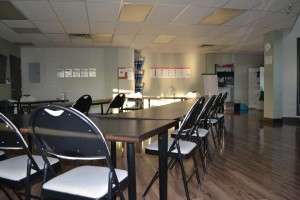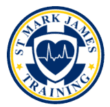
Apart from the depth of the vein in relation to the skin surface, what differentiates superficial thrombophlebitis from deep vein thrombosis is the presence of phlebitis or inflammation of the vein.Superficial thrombophlebitis is not generally considered a medical emergency. Although it is not life-threatening medical emergencies on its own, it may causecomplications that may lead to serious medical problem such as pulmonary embolism, which may eventually result to death.
Risk Factors for Superficial Thrombophlebitis
Superficial thrombophlebitis can occur spontaneously in an individual. However, it is known that the following factors may increase an individual’s risks of developing superficial thrombophlebitis:
- Virchow’s triad:
- Blood vessel wall damage
- Blood flow stasis
- Blood hypercoagubility
- Sitting or staying still for extended periods of time, such as traveling in a car for hours or on a long flight
- Varicose veins
- Recent IV, catheter or injection in a vein
- Chemical irritation of the region
- Use of oral contraceptives and hormone replacement medications
- Pregnancy
- Obesity
- Infection
- Having blood disorders that affect blood clotting
- Thrombophilia
- Smoking
- Deep vein thrombosis
- Cancers of the abdomen
- Factor V Leiden
- Prothrombin gene mutation
- Old age, particularly over age 60
Signs and Symptoms of Superficial Thrombophlebitis
The following are the signs and symptoms of superficial thrombophlebitis. If any of the following symptoms exacerbate, of if new symptoms progress it may denote a more serious condition that would require immediate medical attention.
- Inflammation of the skin along the affected vein
- Warmth and redness of the tissue and skin surrounding the vein, which may eventually darken
- Pain and tenderness that exacerbates upon increasing pressure
- Painful limb
- Hardening of the affected vein (induration)
First Aid Management for Superficial Thrombophlebitis
In majority of the cases, superficial thrombophlebitis is managed at home with effective first aid treatment. It usually takes two weeks to heal. The following steps are recommended in cases of superficial thrombophlebitis:
- Apply a warm compress to the affected area.
- To ease swelling, elevate the affected limb. One may also wear support stockings to limit swelling.
- Take over-the-counter non-steroidal anti-inflammatory (NSAIDs) medications, such as ibuprofen and aspirin, to help decrease redness and irritation.
Disclaimer: This article does not provide medical
advice or treatment. The information given should not be used for self-diagnosis. Seek medical attention when necessary. Understanding symptoms that are commonly present in medical situations may help when taking first aid training. To learn more about to how to ease symptoms of superficial thrombophlebitis, enrol in First Aid Courses with St Mark James Training.
Sources:
Roddick, Julie. (2012). Superficial Thrombophlebitis.Healthline. Retrieved on October 5, 2013, from http://www.healthline.com/health/superficial-thrombophlebitis?toptoctest=expand
Superficial thrombophlebitis.(2012). National Institutes of Health. Retrieved on October 5, 2013, from http://www.nlm.nih.gov/medlineplus/ency/article/000199.htm
